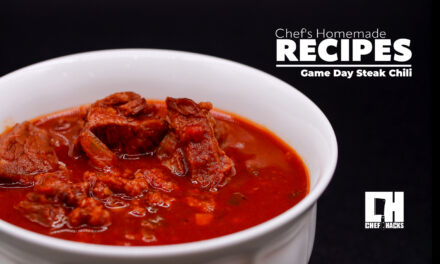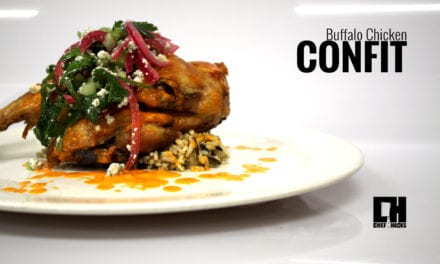On my trip to Peru, Peruvian fried rice or Arroz Chaufa was everywhere—from street stalls to home kitchens. It’s not traditional Chinese fried rice, and it’s not exactly Latin stir-fry either. It’s both. A perfect mix of Chinese technique and Peruvian flavor that tells a real story of the country’s immigrant influence. It’s fast, flexible, and makes great use of leftovers.
This version is simple, bold, and built around the flavor-packed sauce that pulls it all together.
Ingredients
Stir-Fry Sauce
-
1/4 cup soy sauce
-
1 Tbsp hoisin
-
1/2 tsp ground cumin
-
1 tsp sesame oil
-
1/4 tsp sugar
Veggies + Add-ins
-
2 eggs, cooked into an omelet and chopped
-
1 ear of corn, kernels removed
-
1/4 red bell pepper, finely diced
-
1/2 serrano pepper, sliced (optional)
-
2 scallions, whites and greens separated and sliced
Main
-
10 oz cooked, day-old white rice
-
1 inch piece of ginger, peeled and grated
-
4 cloves garlic, grated
Instructions
-
Mix the sauce:
In a small bowl, combine the soy sauce, hoisin, cumin, sesame oil, and sugar. Set aside. -
Prep the veggies and eggs:
Make a quick omelet with the eggs, chop it, and prep all the vegetables. Cut the corn off the cob, dice the pepper, slice the serrano, and separate the scallion whites and greens. -
Cook aromatics:
Heat oil in a wok or large skillet over medium-high. Add the ginger and garlic and stir for about 30 seconds until fragrant. -
Add veggies:
Toss in the corn, red pepper, serrano (if using), and white parts of the scallions. Stir-fry for 2–3 minutes until just softened. -
Add rice:
Add the cold rice, breaking up any clumps. Stir well to coat in the aromatics. -
Sauce it up:
Pour in the stir-fry sauce. Toss everything together until evenly coated and heated through. -
Finish with eggs and greens:
Add the chopped omelet and the green parts of the scallions. Stir to combine and cook for another 30 seconds. -
Serve:
Hot, straight from the pan. Add extra green onions or chili on top if you want some bite.
Recipe Notes
How Peruvian Fried Rice Stands Out
Peruvian Fried Rice isn’t just a local twist on a Chinese dish—it’s the product of over a century of Asian immigration to Peru. In the late 1800s, Chinese workers arrived in large numbers, bringing their food, techniques, and ingredients with them. Over time, those influences merged with Peruvian staples, creating what’s now known as chifa cuisine.
Chaufa is one of the most recognizable dishes from that fusion—built on Chinese stir-fry technique but flavored with local elements like cumin, ají peppers, and Peruvian-grown produce. It’s not fusion for fusion’s sake—it’s a natural evolution of cultures living and cooking side by side.
Pan Size Matters
Use the biggest skillet or wok you’ve got. The key to good fried rice is high heat and space to move everything around. If the pan’s too small, the rice and veggies will steam instead of sear, and you’ll miss that bit of caramelization that makes Chaufa shine. If you only have a medium pan, do it in batches—it’s worth the extra step.
Why Day-Old Rice is Key
Freshly cooked rice holds too much moisture. When it hits a hot pan, it steams and clumps up instead of frying cleanly. Day-old rice has had time to dry out in the fridge, giving you separate grains and better texture. If you’re working with fresh rice, spread it out on a tray, refrigerate it uncovered for an hour or two, and you’ll get close enough.
Flexible on Veggies
This is a base recipe, not a rulebook. Corn, red pepper, and scallions bring sweetness, crunch, and color, but this dish is all about using what you’ve got. Leftover broccoli, carrots, peas, snap peas—even leafy greens like bok choy or napa cabbage all work. Just keep the pieces small and the stir-fry quick so everything stays crisp.





Recent Comments